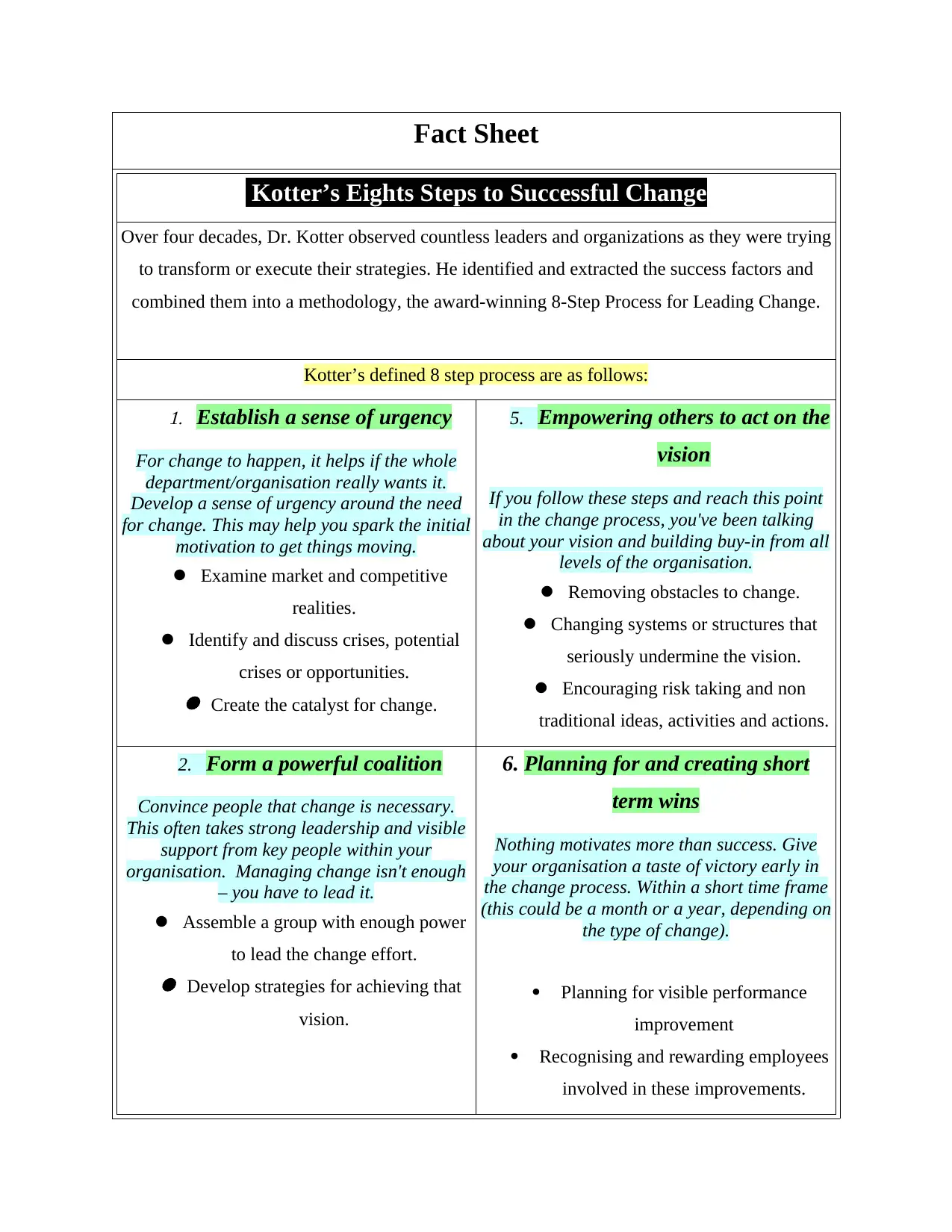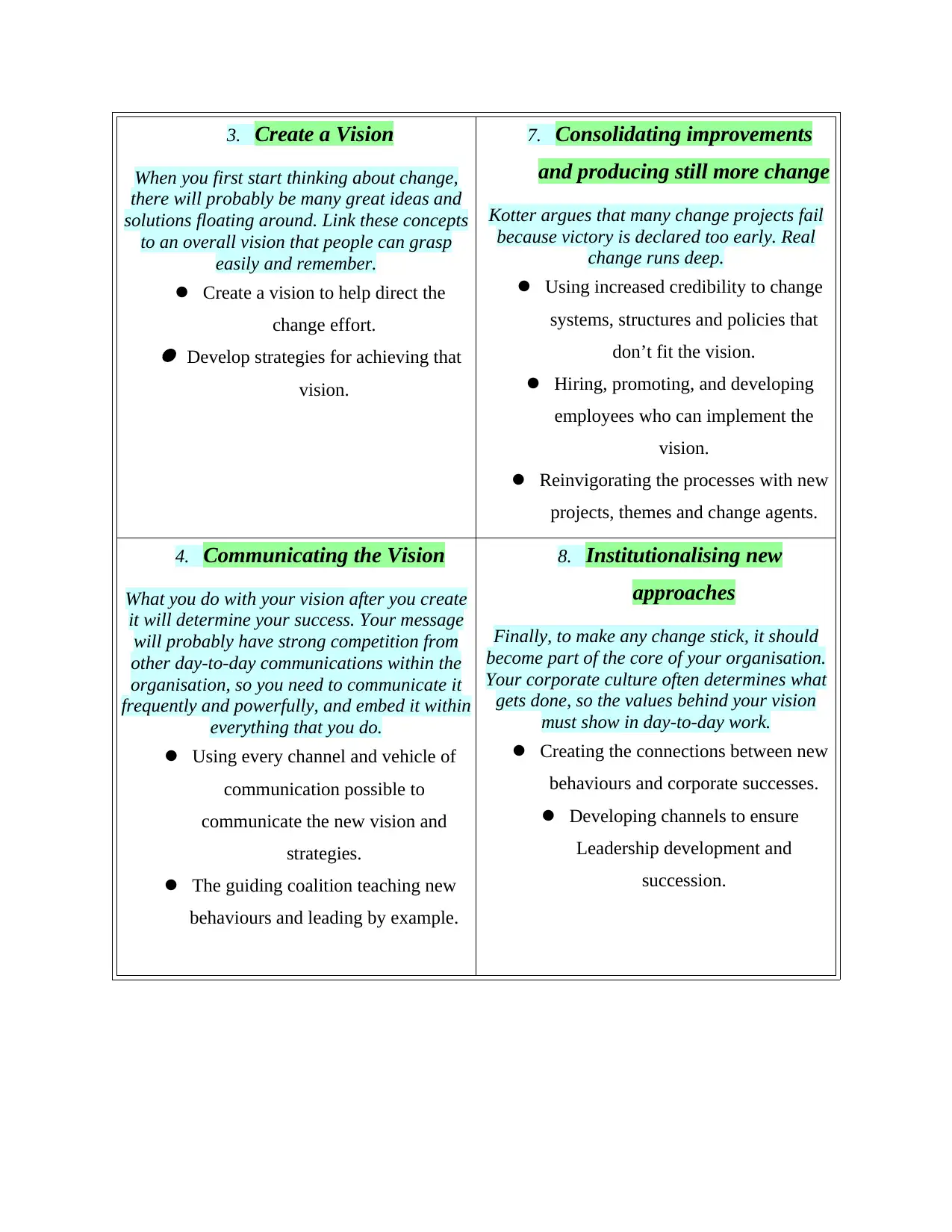Effective Change Management: A Report on Kotter's 8-Step Model
VerifiedAdded on 2020/06/03
|2
|663
|152
Report
AI Summary
This document is a fact sheet that outlines Kotter's 8-Step Process for Leading Change, a methodology developed by Dr. John Kotter after observing numerous organizational transformations. The model provides a structured approach to manage and implement change effectively within organizations. The eight steps include establishing a sense of urgency, forming a powerful coalition, creating a vision, communicating the vision, empowering others to act on the vision, planning for and creating short-term wins, consolidating improvements and producing more change, and institutionalizing new approaches. Each step is described, emphasizing the importance of creating motivation, building support, developing a clear vision, effective communication, removing obstacles, recognizing successes, and integrating changes into the organizational culture. The model aims to guide leaders in successfully navigating the complexities of organizational change, ensuring that changes are not only implemented but also sustained over time.
1 out of 2








![[object Object]](/_next/static/media/star-bottom.7253800d.svg)